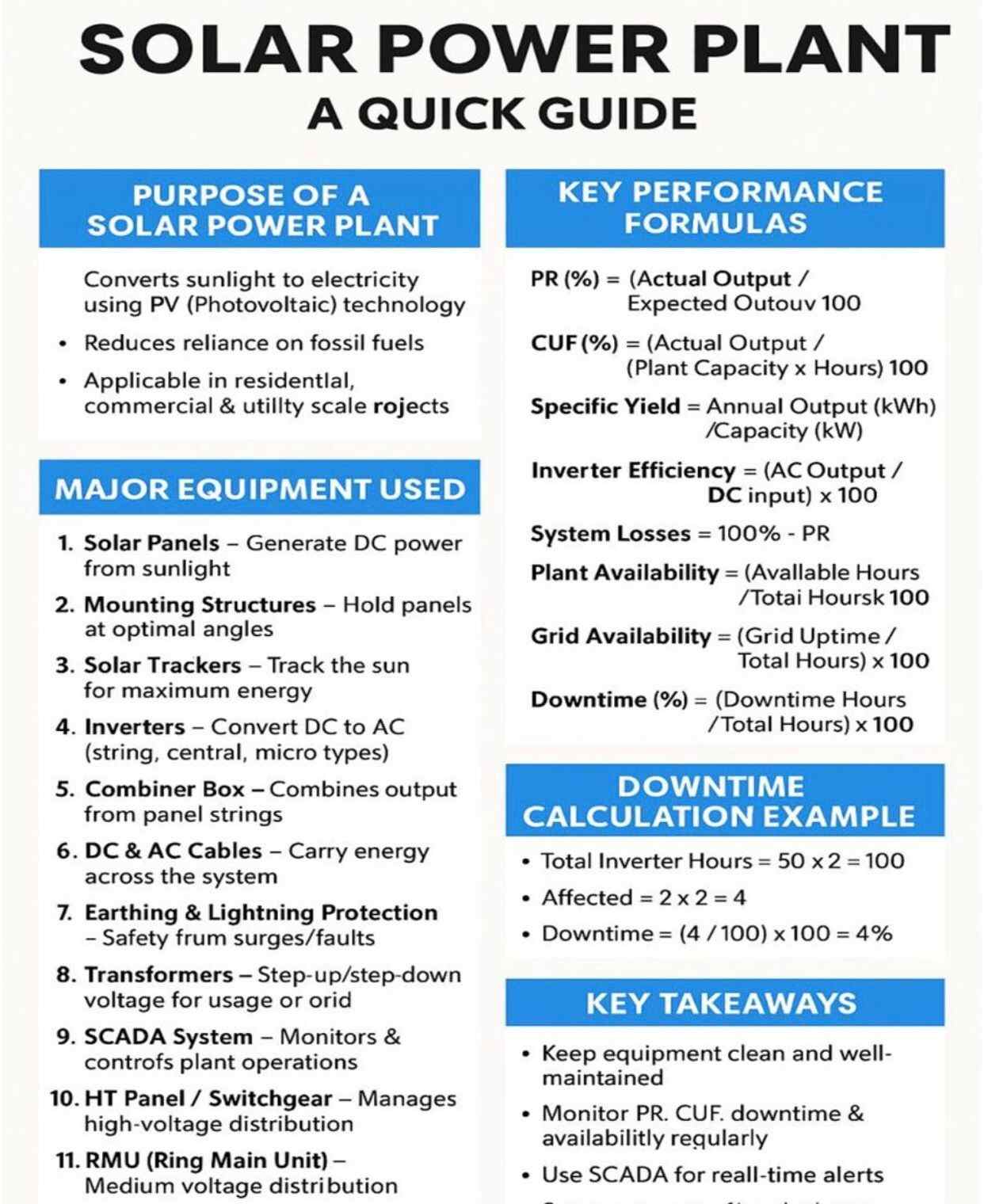Here's a compact guide every solar professional should know:
---
1. Purpose of a Solar Power Plant
Converts sunlight to electricity using PV (Photovoltaic) technology
Reduces reliance on fossil fuels
Applicable in residential, commercial & utility scale projects
---
2. Major Equipment Used
1. Solar Panels – Generate DC power from sunlight
2. Mounting Structures – Hold panels at optimal angles
3. Solar Trackers – Track the sun for maximum energy
4. Inverters – Convert DC to AC (string, central, micro types)
5. Combiner Box – Combines output from panel strings
6. DC & AC Cables – Carry energy across the system
7. Earthing & Lightning Protection – Safety from surges/faults
8. Transformers – Step-up/step-down voltage for usage or grid
9. SCADA System – Monitors & controls plant operations
10. HT Panel / Switchgear – Manages high-voltage distribution
11. RMU (Ring Main Unit) – Medium voltage distribution
12. Meters & Relays – Power measurement and protection
13. Battery Storage (Optional) – Stores excess energy
---
3. Key Performance Formulas
PR (%) = (Actual Output / Expected Output) × 100
CUF (%) = (Actual Output / (Plant Capacity × Hours)) × 100
Specific Yield = Annual Output (kWh) / Capacity (kW)
Inverter Efficiency = (AC Output / DC Input) × 100
System Losses = 100% - PR
Plant Availability = (Available Hours / Total Hours) × 100
Grid Availability = (Grid Uptime / Total Hours) × 100
Downtime (%) = (Downtime Hours / Total Hours) × 100
---
4. Downtime Calculation Example
If 2 inverters out of 50 are down for 2 hours:
Total Inverter Hours = 50 × 2 = 100
Affected = 2 × 2 = 4
Downtime = (4 / 100) × 100 = 4%
---
5. Key Takeaways
Keep equipment clean and well-maintained
10. Monitor PR, CUF, downtime & availability regularly
Use SCADA for real-time alerts
Ensure all protection devices are operational to avoid energy loss
